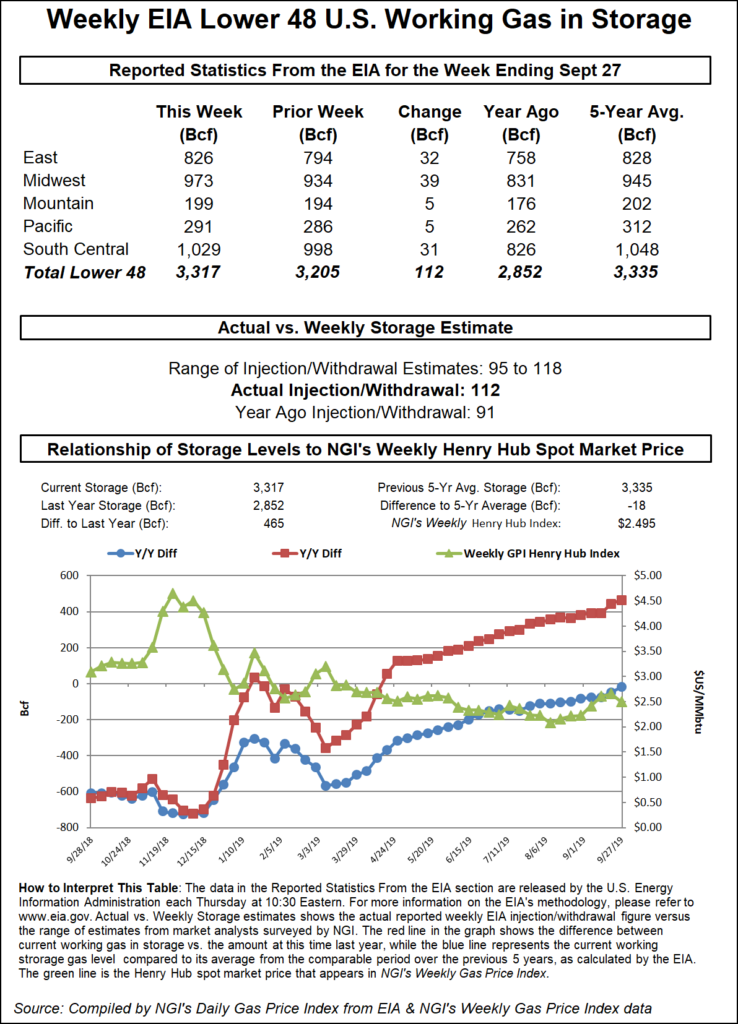Markets | Infrastructure | NGI All News Access
November Natural Gas Futures Choppy After EIA Reports 112 Bcf Storage Build
The Energy Information Administration (EIA) reported a 112 Bcf injection into storage inventories for the week ending Sept. 27, coming in on the high side of estimates and prompting some quick price shifts in and out of positive territory.

The reported build compared with expectations ranging from 95 Bcf to a 118 Bcf build, and it was far above both last year’s 91 Bcf injection and the five-year average build for the week of 83 Bcf.
Nymex futures traders struggled with how to price the November contract in the minutes after the EIA report was released. Early Thursday, the prompt month was up several cents as mid-October weather outlooks trended cooler. Shortly ahead of the 10:30 a.m. ET release, however, the November contract was trading fractionally lower at around $2.24.
November then slipped to $2.229, down 1.8 cents, as the print hit the screen. By 11 a.m., the prompt month was back in positive territory, trading at $2.263, up 1.6 cents.
“Obviously, it’s very bearish versus history, but in reality, the market probably anticipated to see a larger figure. Therefore, not so terrifying, after all,” BlueGold Research analyst Adrian Bakker said.
BlueGold, which had projected a 110 Bcf injection, told analysts on energy chat room Enelyst that prices appeared to be bouncing off the support level near $2.210. A break above $2.300 would open the way toward $2.324 and then $2.363, “but getting to $2.300 should not be easy.”
On the down side, another close support level was at $2.190, which represents a 76.4% Fibonacci level, an indicator of possible support and resistance levels, from an Aug. 5 low to Sept. 17 high. “I think it’s a pretty important level,” Bakker said.
Broken down by region, the Midwest reported the largest week/week injection of 39 Bcf, while the East added 32 Bcf, according to EIA. South Central inventories rose by 31 Bcf, including 13 Bcf into salt facilities and 19 Bcf into nonsalts.
Total working gas in storage as of Sept. 27 was 3,317 Bcf, 465 Bcf higher than last year and just 18 Bcf below the five-year average, EIA said.
© 2024 Natural Gas Intelligence. All rights reserved.
ISSN © 1532-1231 | ISSN © 2577-9877 |
